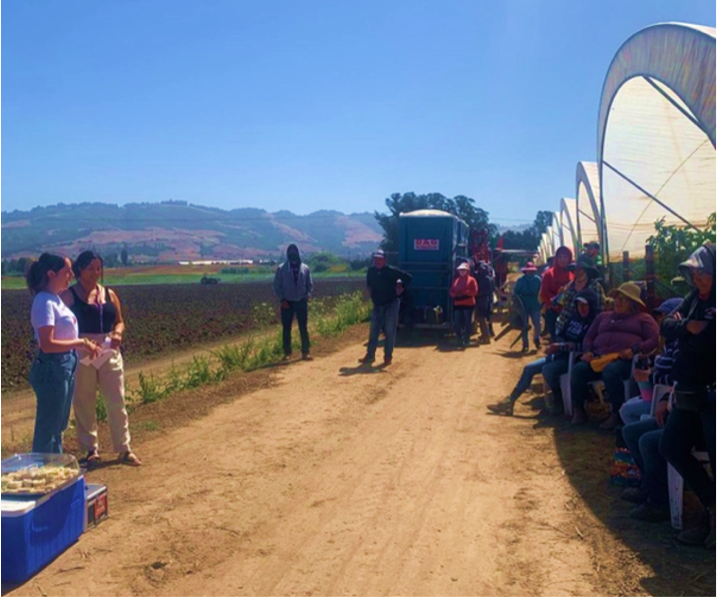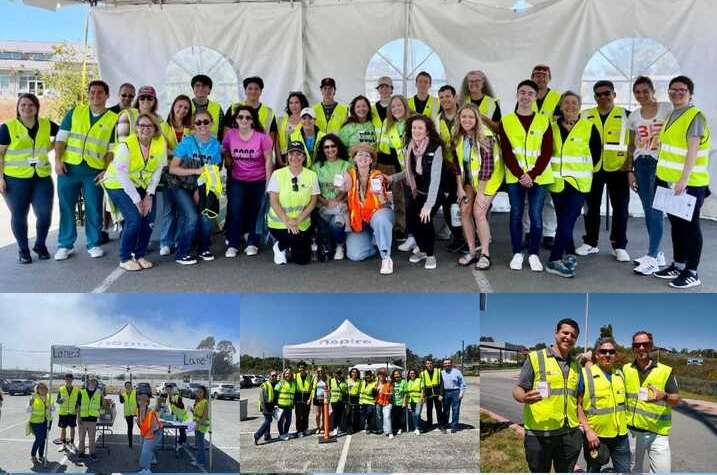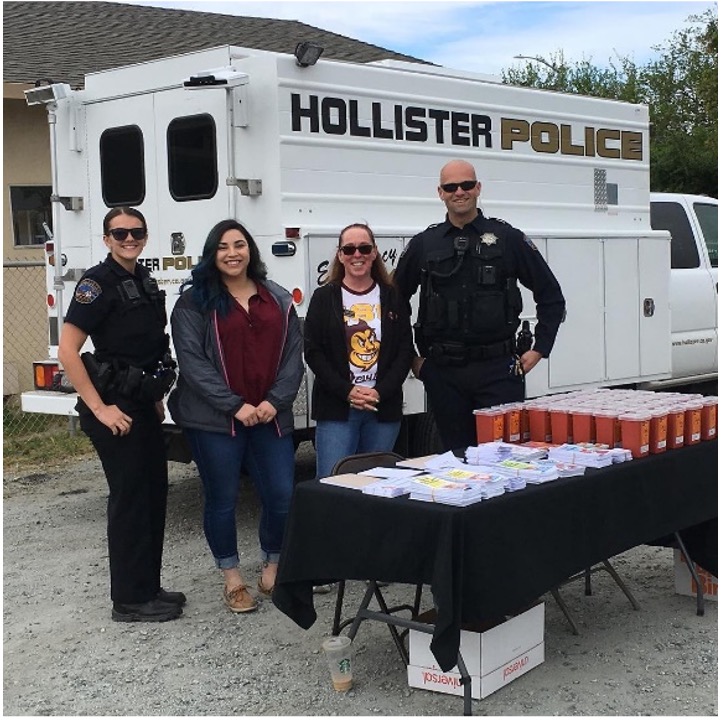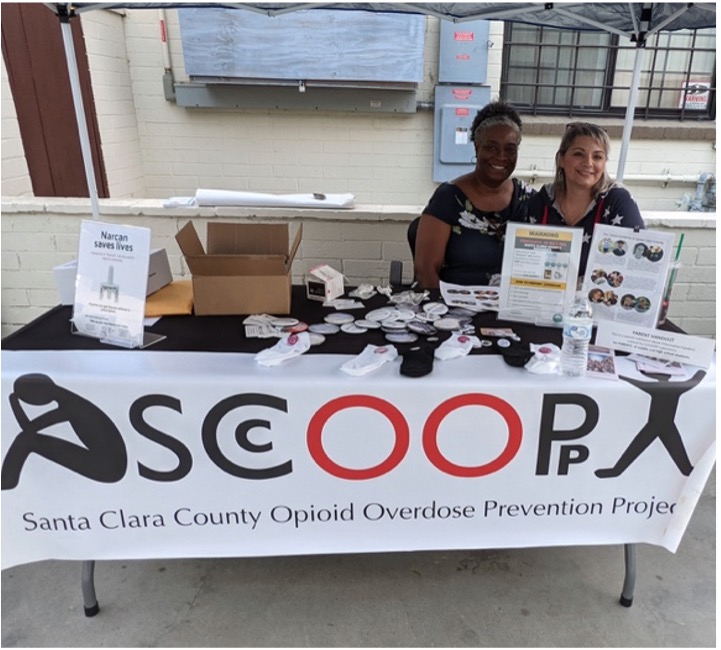Coalitions Play Critical Role in Addressing Substance Use, Overdose Crisis in CA
Highlights
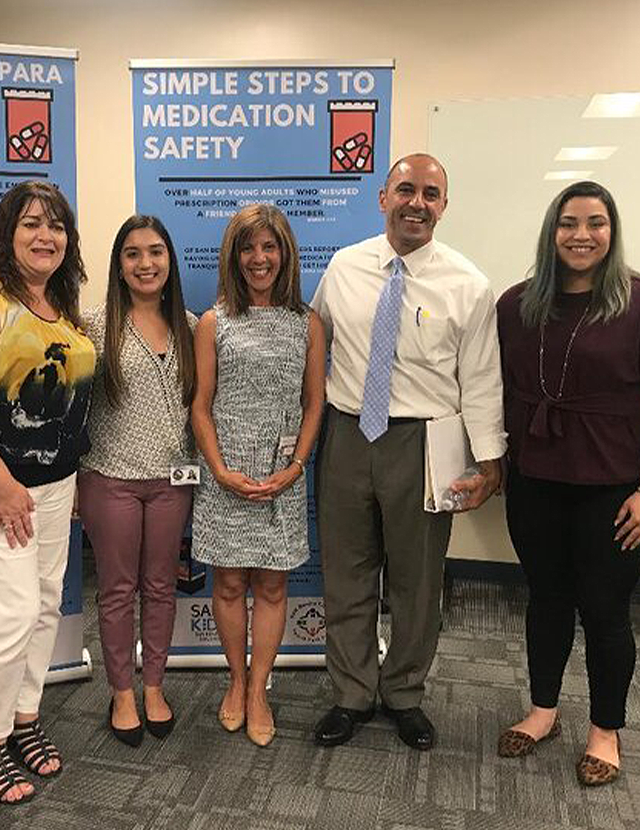
The California Overdose Prevention Network, a program of PHI Center for Health Leadership & Impact, brings together more than 40 coalitions who are working in communities throughout the state to prevent new substance use addictions, manage pain safely for patients, treat addiction and stop overdose deaths.
41 coalitions serving 45 counties in California
85% of Californians are reached through multi-sector partnerships
63% of coalitions increasing access to MAT
63% of coalitions implementing local policy changes
88% of coalitions increasing public awareness of opioid safety
88% of coalitions promoting harm reduction services
-
Focus Areas
Alcohol, Tobacco, Drugs & Mental Health -
Expertise
Coalition & Network Building, Health Education & Promotion -
Strategic Initiatives
Opioids
California has taken a unique approach in addressing the overdose crisis by creating multi-sector community coalitions. Community coalitions build unprecedented partnerships and engagement across sectors. They define unique approaches to local issues because they represent the communities they serve, are able to mobilize assets, change local culture by addressing stigma, and understand how to make policy relevant in the local environment. They are also grounded within communities, making them well-positioned to adapt to the changing environment while sustaining effective interventions and programs.
As of 2023, the California Overdose Prevention Network (COPN), a program of PHI Center for Health Leadership & Impact, has grown to include 41 coalitions who serve 45 counties in California. COPN is the largest overdose prevention network in the country, with active coalitions serving 85% of California’s 39 million people. Through a COPN Accelerator program, local coalitions participate in a 12-month cohort.
In 2023, the PHI Center for Health Leadership and Impact successfully secured COPN as a fiscal sponsor to continue core funding to local overdose coalitions after previous grant support from the Centers for Disease Control and Prevention ended. COPN now issues funding to 19 local coalitions, totaling $1,550,000. In addition, COPN’s Accelerator program has offered coalitions an opportunity to participate in a 12-month cohort, boosting the impact of local coalitions.
The coalitions have made large local impacts through strategic multi-sector partnerships and have implemented best practices and evidenced-based strategies through four core areas of work: preventing new addictions, managing pain safely, treating addiction, and stopping overdose deaths. The coalitions have been instrumental in expanding access to naloxone and Medication Assisted Treatment (MAT), and in utilizing data to inform local action.
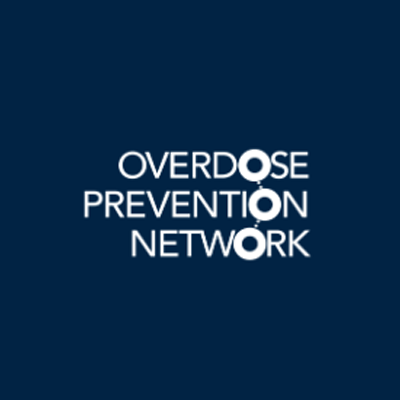
Before COPN we operated in a more isolated way...COPN has broadened our prospective and given us a sense of unity with other coalitions tackling our nation's overdose epidemic.COPN local coalition team member
The Impact of Coalitions in California
The following are some of the top coalition successes that occurred from September 1, 2022 – April 31, 2023:
- Butte Glenn Opioid Safety Coalition has distributed over 24,000 fentanyl test strips throughout the community.
- Safe Rx Santa Cruz distributed 550 Narcan units at a free naloxone drive thru event.
- Empower Watsonville worked in partnership with youth to amplify their voice and obtain feedback to help implement policies in their school district.
- Safe Rx Mendocino helped implement a policy for all first responders in their county that requires them to have naloxone at all times.
- Sacramento County Opioid Coalition helped initiate and complete internal policy changes at over 112 local educational institutions.
- Santa Barbara Opioid Safety Coalition launched a free, online mail order system for naloxone. Since the launch, 430 + kits have been ordered and at least 7 overdose reversals reported.
Highlights from the California Overdose Prevention Network Accelerator Program
Implementing School Naloxone Policy in Shasta, CA
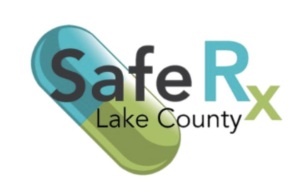 SafeRx Lake County worked with Lake County Office of Education to recently implement a local school naloxone policy. This policy allows for the superintendent or designee, or any trained district staff member, to administer naloxone during an opioid overdose. It also includes language to ensure the superintendent or designee trains and distributes naloxone kits to district staff, and replaces any used or expired kids. Learn more and view the policy.
SafeRx Lake County worked with Lake County Office of Education to recently implement a local school naloxone policy. This policy allows for the superintendent or designee, or any trained district staff member, to administer naloxone during an opioid overdose. It also includes language to ensure the superintendent or designee trains and distributes naloxone kits to district staff, and replaces any used or expired kids. Learn more and view the policy.
SLO Naloxone Now Awareness Campaign
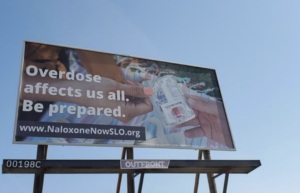 To make naloxone more accessible in their county, San Luis Obispo (SLO) Opioid Safety Coalition collaborated with the Cal Poly Digital Transformation Hub (DxHub) and a team of university students to develop Naloxone Now. Using Naloxone Now online or through the phone app, SLO community members can find the nearest location to get naloxone or have it delivered at no cost. Recently the coalition has increased their awareness campaigning around the Naloxone Now app to be more visible to community members throughout their county through digital campaigning and billboard placement in county (see above). Read about the campaign.
To make naloxone more accessible in their county, San Luis Obispo (SLO) Opioid Safety Coalition collaborated with the Cal Poly Digital Transformation Hub (DxHub) and a team of university students to develop Naloxone Now. Using Naloxone Now online or through the phone app, SLO community members can find the nearest location to get naloxone or have it delivered at no cost. Recently the coalition has increased their awareness campaigning around the Naloxone Now app to be more visible to community members throughout their county through digital campaigning and billboard placement in county (see above). Read about the campaign.
Data & Findings from Coalition Participants
The following shows the impact of coalitions, based on quantitative and qualitative data that was collected from the coalitions:
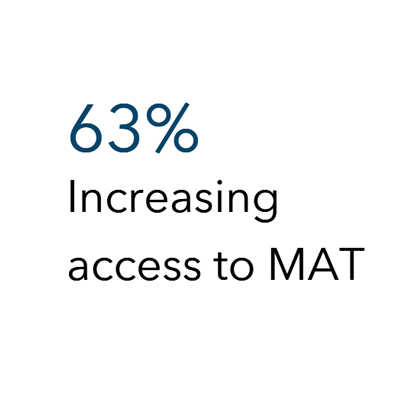
We provided multiple physical and virtual resources to highlight informational campaigns and training for physicians on how to provide patients access to MAT treatment. This included 11 training sessions ranging from topics from how to navigate this subject sensitively with patients, to how the pregnant person's body is affected by these types of treatment. The aim was to open up the conversation, lessen stigma, and provide encouragement to physicians providing MAT treatment.COPN Accelerator 3.0 team member
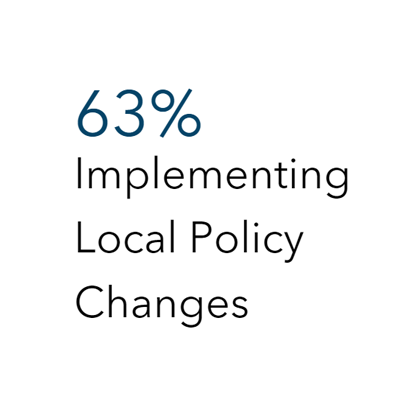
We helped initiate and complete internal policy changes at over 112 local educational institutions so they may feel comfortable and prepared to possess, distribute, and administer Naloxone to their served populations across their multiple campuses. We have met and collaborated with institutions that serve BIPOC communities over 10 times.COPN Accelerator 3.0 team member
We have been able to develop a partnership that will allow us to work with providers to learn about what is going on with MAT access and prescription of buprenorphine in our counties. We hope to develop resources and educational materials for our medical providers.COPN Accelerator 3.0 team member
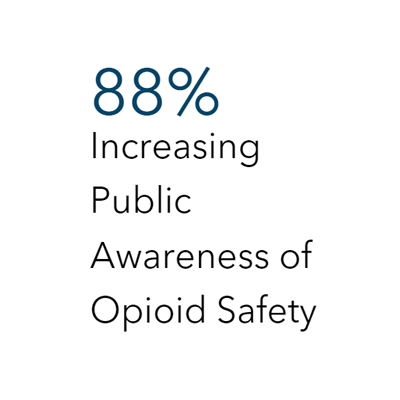
We have presented at multiple events throughout the community, providing naloxone, materials, and trainings in overdose reversal response at health fairs, BIPOC Healthy Families Community Events, substance use awareness events, memorials, fundraisers, 5 Ks awareness races, prevention summits, local staff that serve the homeless, and current and former foster youth demographics. We presented on Harm Reduction during the Age of Fentanyl and displayed our Gone Too Soon Memorial Project at the 5th Annual Sacramento County Prevention Summit, 2023.COPN Accelerator 3.0 team member
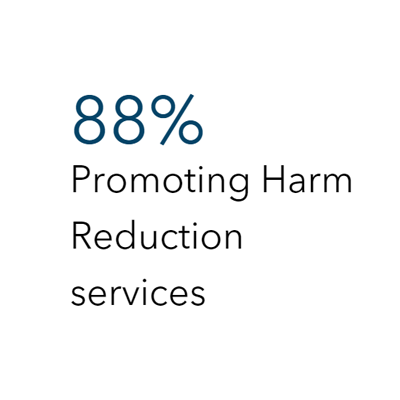
We included resources for drug testing supplies such as Fentanyl Test Strips and have distributed over 700 strips into our community. Each Narcan kit comes with two doses, a CPR facemask, instructions, and alcohol wipes. We provide our instructions in other languages upon request and have translated into four languages.COPN Accelerator 3.0 team member
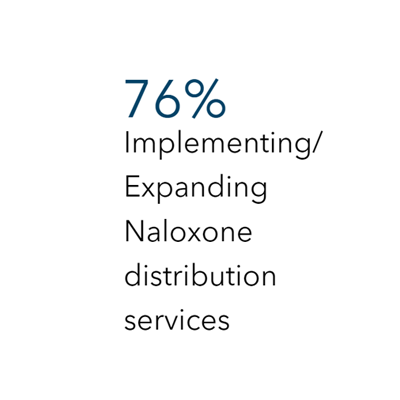
During this reporting period, we distributed 4,805 fentanyl test strip kits (FTS) to 10 coalition partners. Out of the 10 agencies, 8 agencies had never distributed FTS before. We were able to re-engage partners that had been lost over the Covid-19 pandemic. Due to the partnership, each FTS kit had 5 individually wrapped test strip and an instruction card with local resources. That was 24,025 strips in our county!COPN Accelerator 3.0 team member
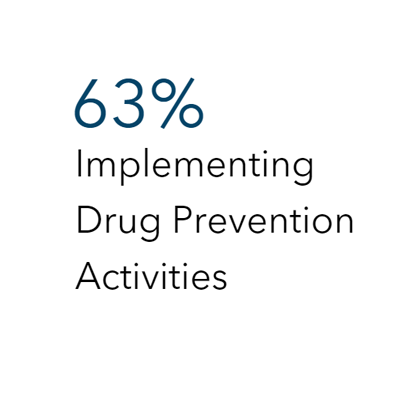
Our prevention activities have included outreach, community presentations, and youth focus groups. A major success we have had is the youth being involved in the process since the beginning and strategizing on how to create systems change based on information and feedback they have collected from their peers.COPN Accelerator 3.0 team member
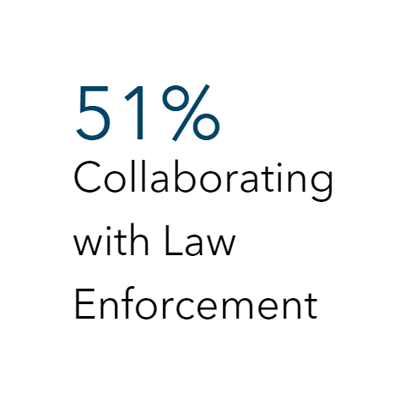
We continue to partner with the Butte County Interagency Narcotics Taskforce (BINTF) and the High Intensity Drug Trafficking Area representatives. Our BINTF commander is part of the coalition and supports use of coroners reports of overdose deaths to help inform the coalition of current trends.COPN Accelerator 3.0 team member
Findings from coalition participants showed that 100% of the coalitions are working with at-risk populations. Listed below are examples of equity-driven projects that the coalitions are working on right now:
- A pilot project to place ‘Naloxboxes’ throughout the community to make naloxone available to high risk populations
- Engage unhoused individuals with substance use disorders by offering on-site treatment in their outpatient recovery services
- Provide overdose prevention trainings and educational materials to high risk populations in the community such as those who are geographically isolated, Tribal communities, and Hispanic/Latinx populations.
COPN is a program of PHI Center for Health Leadership & Impact (CHLI). A version of this impact was published in an Infogram (below) and CHLI’s 2022 annual report.
About PHI Center for Health Leadership and Impact
The mission of PHI Center for Health Leadership & Impact (CHLI) is to advance health by increasing leaders’ capacity to transcend boundaries and transform their communities. Through the use of blended learning modalities, CHLI leads programs for teams, coalitions and networks to advance leadership skills and reduce health inequities. CHLI leads the California-based and national Overdose Prevention Networks. For more information, visit their website.
Work With Us
You change the world. We do the rest. Explore fiscal sponsorship at PHI.
Support Us
Together, we can accelerate our response to public health’s most critical issues.
Find Employment
Begin your career at the Public Health Institute.
